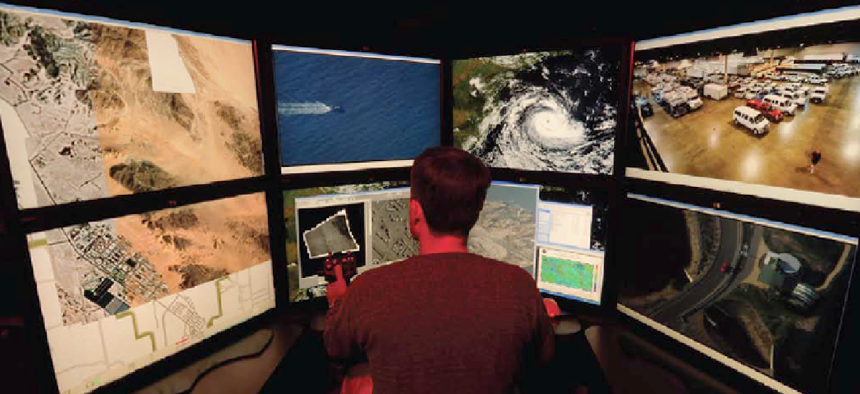Keeping classified geospatial analysis on track during COVID
To continue developing artificial intelligence and machine learning applications to process geospatial data, the National Geospatial-Intelligence Agency found innovative ways to fill workflow gaps created by the pandemic.
As the amount of geospatial data the intelligence community processes has soared, the IC has become increasingly reliant on artificial intelligence and machine learning. When the pandemic hit and analysts moved to remote work, the National Geospatial-Intelligence Agency (NGA) leveraged existing technologies in innovative ways to accommodate new workflow gaps, according to a new white paper from the United States Geospatial Intelligence Foundation, a geospatial intelligence community nonprofit.
Without access to classified facilities, data and the advanced computing infrastructure required for compute-intensive analysis, home-bound NGA staff were still able to meet mission demands by embracing new approaches to their work.
One tactic was to develop applications for the unclassified environment and deploy them into classified environments using end-to-end cross-domain pipelines, an approach developed by NGA and Booz Allen Hamilton. With that strategy already in place, NGA was able to accommodate remote work and sustain its cross-domain workflows, ensuring that development and testing in unclassified environments could be “seamlessly transitioned to the classified space,” the paper said.
Analysts also leaned into unclassified collaborative tools such as the NGA Open Mapping Enclave, an online platform that enables screened users to contribute to foundational map data by leveraging unclassified data and a combination of AI/ML models, automation tools and human expertise.
NGA adapted ODIN, its commercial data-as-a-service solution, to facilitate remote work. ODIN uses AI and ML tools to rapidly sift through vast amounts of open content and deliver processed and formatted content to analysts in a classified operating environment. During the pandemic, ODIN was adapted to serve as a situational awareness tool that flags low-resolution items of interest in an unclassified environment for more detailed analysis later.
Limited capabilities in the classified networks created some opportunities, too. Teleworking analysts working in an unclassified environment shifted some of their attention to labeling imagery that would be used to train computer vision models.
The pandemic also opened up opportunities for training, giving analysts time to learn new skills, including building robotic process automation models for collecting and processing data. Classified use cases were translated to unclassified analogs so that training could take place outside secured facilities.
Still, challenges remain. With the increasing number of client endpoints, the IC had to “reassess and re-examine processes and technologies to apply the appropriate controls and balance risk,” the paper said. Additionally, many organizations struggle to use video conference and collaboration tools to effectively communicate between in-office and remote staff.
Read the white paper, “Geospatial Intelligence & AI/ML Progress During a Pandemic,” here.
This article first appeared on GCN, a Defense Systems partner site.





